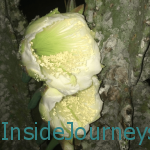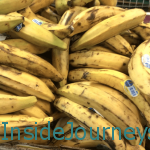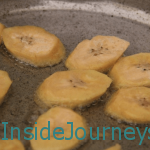I hadn’t thought of Pickapeppa Sauce until my friend, Susan, asked me to pick up a bottle for her. Her supply had run out and she couldn’t find the popular sauce in her neighborhood grocery store.
Her simple request brought back a flood of memories reminded me how beloved this original Jamaican sauce is. It is the only prepared sauce my mother and grandmother used.
I remember being fascinated by Pickapeppa Sauce, from its distinctive label of a bird contemplating a bright red bird pepper to the unusual name of the rural community, Shooter’s Hill, where Pickapepper Company is located.

Pickapeppa is versatile. You can use it as a marinade, a meat sauce, a steak sauce, barbecue and pepper sauce, and to flavor everything from vegetables to scrambled egg.
Slightly thick and dark, more sweet than peppery, Pickapeppa is made from onions, tomatoes, tamarind, mango, raisins, sugar, cane vinegar, salt, pepper, and spices. The ingredients are blended and left to age in oak barrels for a year before bottling.
The Pickapeppa Company has been making Pickappa Sauce for 93 years at its location in Shooter’s Hill, Manchester. The company, which has been family-owned since 1945, employs about 50 people and purchases approximately 80% of its raw materials from local farmers.
Pickapeppa exports 95% of its products and earns approximately US$1.5 million annually, primarily from exports to the US. This local favorite can be found in restaurants and pantries worldwide and, I’ve discovered, is even sold at Walmart and on Amazon.
Have a foodie post you’d like to share? Join the #FoodieTuesday linkup and add it here –
- Add the link to your foodie post in the link tool below.
- As a courtesy, please include a link back to this post.
- To make it a fun linkup, don’t forget to leave a comment here and comment on as many posts as you can.
- If you Tweet, G+, Facebook please use the hashtag #FoodieTuesday.
[inlinkz_linkup id=421759 mode=1]
























